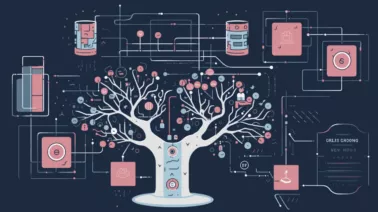
Since the advent of the internet, technology has taken on an increasingly key role in our everyday personal and professional lives. Technological development has naturally led to information technology (IT) proliferating the operations and processes of every type of company. With increasing numbers of projects requiring a technological foundation, tech-savvy project managers who can keep the work organized are now in high demand.
In this article, we cover the basics of IT project management and share some tips on getting started in project management.
What is IT Project Management?
Project managers are frequently responsible for performing a needs assessment, organizing resources, tracking progress, and sequencing tasks. They tend to be the main point of contact for project stakeholders and have the most context about the project’s progress and timelines. Project managers are also commonly tasked with communicating project-related matters throughout the organization.
On technology-related projects, project management also requires fluency in technical terms and concepts. For example, an IT project manager might need to know how firmware and software integrations work in order to put together the timelines for an integration project. While project managers rarely build and manage websites themselves, they need to understand the basics of web development to effectively direct a website project.
A tech project manager might also need to have familiarity with such tasks as constructing databases, creating networks, provisioning servers and related infrastructure, building software applications and services, and releasing new software product features.
In addition to coordinating all parts of a project against timelines, IT project managers work with relevant team members to mitigate data risks and ensure the meeting of all compliance and legal requirements.
Let’s look at some of the basic components of IT project management in more detail.
Lifecycle Methods in IT Project Management
Regardless of the field, we can think of project management as having five basic phases. According to the Project Management Institute, these are: initiation, planning, execution, performance/monitoring, and project close. Let’s go over the two most popular project lifecycle methods implemented by IT project managers when designing and administering their projects.
Waterfall Method
This method, which is by far the most common in the IT project management world, involves defining the entire project in the planning stage. Because each phase must be initiated and fully closed out before starting the next, it’s ideal for linear projects where all or most tasks to be performed are well-defined.
The waterfall method may be broken down into six phases. In the requirement stage, the project manager determines the project’s objectives and how these are to be accomplished. The PM will then produce a requirements document to be reviewed by the stakeholders.
In the design stage, the project manager creates a design document that elaborates on the stakeholders’ determinations in the requirement stage, as well as what is required of the IT team to complete the project. In the third stage, or the implementation stage, the IT project team carries out the core work according to the design document.
The fourth stage, or the testing stage, comprises a quality check: the team checks its deliverables for errors and compliance with the specifications from the design document. If the work does not meet the agreed-upon standards, the implementation stage is restarted.
The installation phase begins once the deliverables are confirmed to reflect the intentions set out in the design document. At this point, the project is ready for the end-user to begin operating. Lastly, the maintenance phase is to ensure the end-user has support whenever bugs come up or updates become available.
As the go-to method for many companies and individual project managers, the waterfall method is a mainstay of IT project management and familiarity with it is key to any IT project manager position.
Agile Method
As its name implies, the agile method is the most flexible approach to IT project management. This method uses short activity bursts called sprints to condense timelines, which allows project managers and their teams to revisit their milestones and pivot when the project needs to take a different direction.
Given its higher capacity for flexibility compared to waterfall, agile is usually a better fit for projects with less up-front certainty where details need to be discovered throughout the project.
For example, when developing software it’s common for a software team to learn new information about user preferences during the development process. The agile team can adjust the scope of their deliverable on the fly based on the new findings.
Skills Required of an IT Project Manager
Not only must IT project managers deal with the usual challenges of project management, but they must also be ready to handle the complexities and interdependent technologies of large-scale, long-term projects. Given an existing system, they must be adept at negotiating how to integrate new hardware, networks, and software, as well as deciding what technologies to onboard.
Ever-evolving technologies, version updates, unclear expectations from stakeholders, communication issues with team members, integration requirements and working with a geographically dispersed team are common issues that can all occur over the course of a single project timeline. Let’s go over some job-specific skills IT project managers must have to handle these challenges.
Ability to Assess Project Worth
IT project managers constantly assess projects submitted by stakeholders or requested by an enterprise client. A strong PM is able to determine whether a project is an appropriate use of resources and will accomplish a given goal.
They’ll need to properly define the scope, budget, technologies and other requirements before giving the green light to the delivery team.
Strong analytical skills — technical and otherwise — are thus crucial to an IT project manager position.
Capacity for Planning
It goes without saying that planning is crucial to any project management role. Like all project managers, those in the IT field must excel at creating adequate milestones and setting project-appropriate timelines.
However, technical projects require managers to be familiar with the technologies in play and how they will impact the sprints or project phases. Is the team using new technology? If so, how will that impact the deliverables timeline? How familiar is the lead engineer with the two programming languages used for the project? Has this individual integrated them together in the past? To account for these questions, the IT project manager must have a solid grasp of the tech stack and the team’s ability, coupled with an unparalleled capacity for planning.
Communication
Aware of the workplace pitfalls associated with miscommunication, a solid IT project manager might over-communicate with stakeholders and teammates. This includes promoting and participating in both formal activities like daily standups to discuss status, as well as informal check-ins to gauge developers’ comfort with any new technologies the team might be using.
This might entail onboarding engineers onto seemingly simple project management software, or being extra transparent about a change in direction. Great IT project managers know that they must keep all team members and stakeholders abreast of all updates — and accept and act upon new information from them in return — to maintain the project’s quality and timeline.
Ability to Monitor Progress
There might be a fine balance between high-level status tracking and micromanaging the underlying work. A strong IT project manager knows how to strike this balance, thanks to the aid of the right project management tools.
Tools such as kanban boards and interactive Gantt charts enable real-time progress monitoring without requiring the PM to personally interject to ensure all is going according to plan. But relying on tooling is not enough: the project manager must know if team members have too much on their plate or need help with any of their tasks. The ability to monitor progress thus depends on both proficiency in project management tools and an ability to accurately gauge where team members stand with their workloads.
Ability to Assess Project Impact
Another skill crucial to the job involves being able to retrospectively ascertain what went well in each project and what could have gone better. Again, this requires determining how technology impacted the workflow. What were the weaknesses of a new technology and how did that impact the project? Did switching from one type of database to another decrease latency? An adept IT project manager is able to determine if a project met the business needs defined in the planning stage while also assessing the technological pros and drawbacks involved.
How Can I Break Into IT Project Management?
For those new to project management, we recommend focusing on the core skills first. Consider taking on small projects that involve multiple folks working together as part of your studies or work.
At project completion, get feedback from your team members and stakeholders and make note of how you could improve next time. Take on more ambitious or complex projects over time and internalize your use of the core skills of planning, communication, impact assessment, and progress monitoring.
For project managers looking to switch from non-technical fields into more technical projects, a lot of the work is very similar, and your existing skills will be valuable in an IT project management position. To be successful in the IT context, consider learning more about the underlying work you’re managing by asking team members to explain their work methods.
Summary
In this article, we went over the role of an IT project manager and how this position differs from a general project manager. We also touched on what an IT project manager workflow might look like and the key skills needed to find success on the job.
If IT project management sounds like an attractive career path to you, we encourage you to reinforce the knowledge and skills you’ll need as an IT project manager by completing our Product Manager course.



